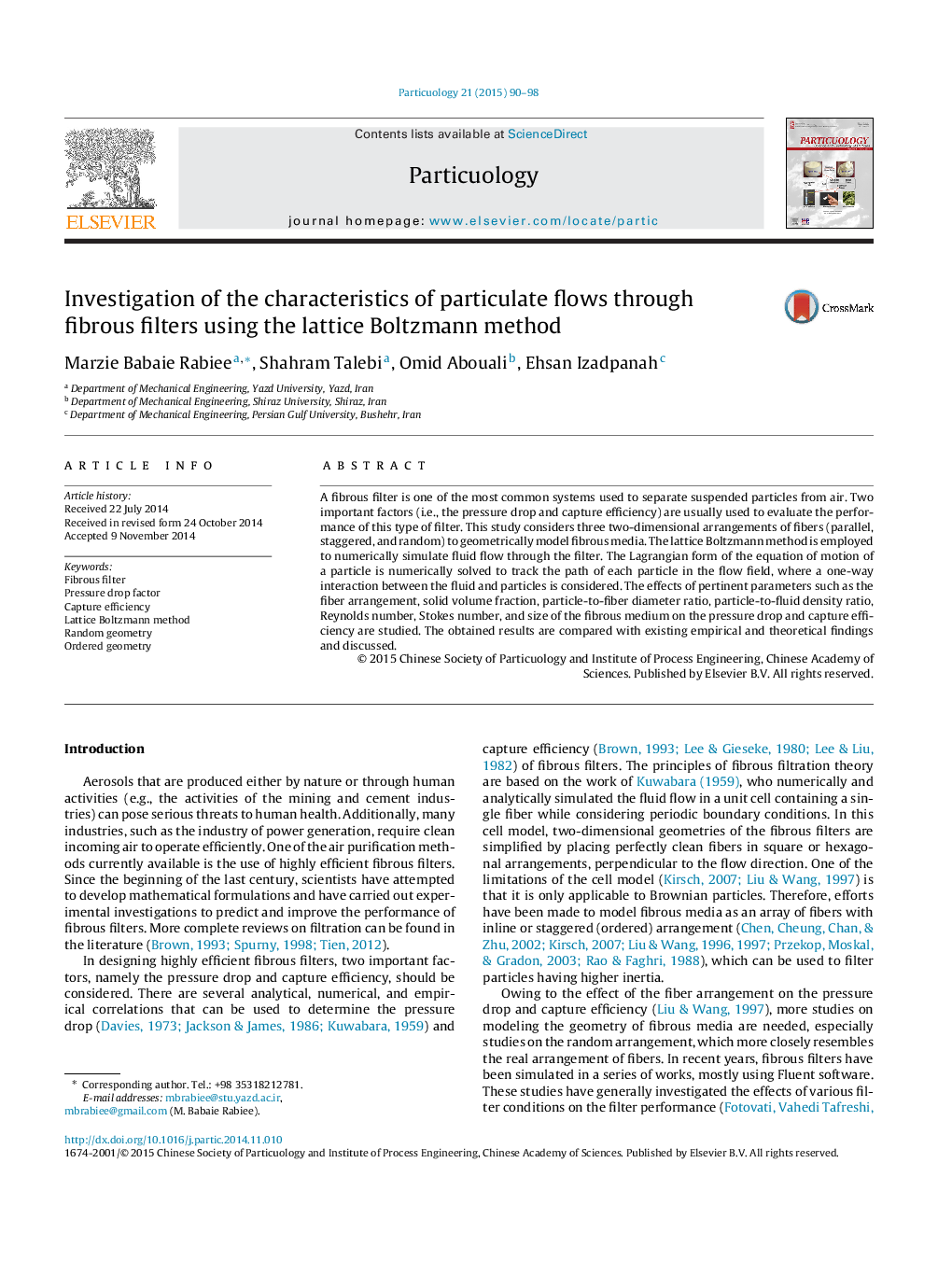| Article ID | Journal | Published Year | Pages | File Type |
|---|---|---|---|---|
| 671832 | Particuology | 2015 | 9 Pages |
•The lattice Boltzmann method was employed to understand the mechanism of fibrous filters.•Results of two regular arrangements of fibers and a random arrangement were compared.•Several particle sizes and densities were considered.•Effects of pertinent parameters on the pressure drop and capture efficiency were studied.
A fibrous filter is one of the most common systems used to separate suspended particles from air. Two important factors (i.e., the pressure drop and capture efficiency) are usually used to evaluate the performance of this type of filter. This study considers three two-dimensional arrangements of fibers (parallel, staggered, and random) to geometrically model fibrous media. The lattice Boltzmann method is employed to numerically simulate fluid flow through the filter. The Lagrangian form of the equation of motion of a particle is numerically solved to track the path of each particle in the flow field, where a one-way interaction between the fluid and particles is considered. The effects of pertinent parameters such as the fiber arrangement, solid volume fraction, particle-to-fiber diameter ratio, particle-to-fluid density ratio, Reynolds number, Stokes number, and size of the fibrous medium on the pressure drop and capture efficiency are studied. The obtained results are compared with existing empirical and theoretical findings and discussed.
Graphical abstractFigure optionsDownload full-size imageDownload as PowerPoint slide
